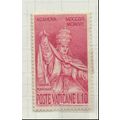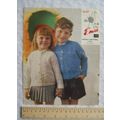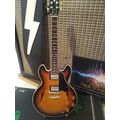Winsford, Somerset - St Mary Magdalene Church - Judges postcard c.1970s
- Condition : Used
- Dispatch : 2 Days
- Brand : None
- ID# : 182752873
- Quantity : 1 item
- Views : 99
- Location : United Kingdom

- Seller : justthebook (+1703)
- Barcode : None
- Start : Mon 24 Jun 2019 11:46:06 (BST)
- Close : Run Until Sold
- Remain : Run Until Sold
More Listings from This Seller view all
Seller's Description
- Postcard
- Picture / Image: Winsford Church [Somerset] [St. Mary Magdalene]
- Publisher: Judges (C3310X)
- Postally used: no
- Stamp: n/a
- Postmark(s): n/a
- Sent to: n/a
- Notes / condition:
Please ask if you need any other information and I will do the best I can to answer.
Image may be low res for illustrative purposes - if you need a higher definition image then please contact me and I may be able to send one. No cards have been trimmed (unless stated).
------------------------------------------------
Postage & Packing:
Postage and packing charge should be showing for your location (contact if not sure).
No additional charges for more than one postcard. You can buy as many postcards from me as you like and you will just pay the fee above once. Please wait for combined invoice. (If buying postcards with other things such as books, please contact or wait for invoice before paying).
Payment Methods:
UK - PayPal, Cheque (from UK bank) or postal order
Outside UK: PayPal ONLY (unless otherwise stated) please. NO non-UK currency checks or money orders (sorry).
NOTE: All postcards are sent in brand new stiffened envelopes which I have bought for the task. These are specially made to protect postcards and you may be able to re-use them. In addition there are other costs to sending so the above charge is not just for the stamp!
I will give a full refund if you are not fully satisfied with the postcard.
----------------------------------------------
Text from the free encyclopedia WIKIPEDIA may appear below to give a little background information (internal links may not work) :
*************
Winsford is a village and civil parish in Somerset, England, located about 5 miles (8 km) north-west of Dulverton.
It is within the borders of the Exmoor National Park and around 10 miles (16.1 km) south-west of the coastal town of Minehead. The village has one hotel, The Royal Oak[2][3] dating to before the start of the 16th century, and one shop and post office. There is also a tea garden and a service station, which does not serve fuel for motor vehicles.
The village is on the route of the Samaritans Way South West and is located within the Exmoor National Park, to the east of the village is the hamlet of West Howetown.
Winsford Hill is the location of the Wambarrows, a number of bronze age burial sites, and Road Castle an Iron Agebank and ditch approximately 2 miles (3.2 km) west from the village. The ditch is almost square in plan with rounded corners and covers an area of approximately 0.7 acres (0.28 ha).[4]
The Caratacus Stone, a standing stone believed to have been erected by pagan inhabitants of the village,[5] possibly as a religious memorial, bearing the inscription CARAACI NEPUS (kinsman of Caratacus) possibly from the 5th century,[6]and first documented in 1219.
The village appears in the Domesday Book of 1085, which lists the presence of 34 smallholders, 41 villagers, 52 sheepand 9 slaves, the whole area being capable of supporting 64 ploughs, despite 40 acres (160,000 m2) of it being woodland.[5] The parish of Winsford was part of the Williton and Freemanners Hundred.[7]
Farms in the village include Nethercote, Staddon, Bradley, Halse, Upcott and Knaplock, all of which have retained their original names since tax records from 1327, during the reign of King Edward III.[5]
In the 17th century, Tom Faggus, a highwayman and a gentleman, was said to have held up travellers near the inn in Winsford.[8]
On 20 August 1907 the first registered sale and show of the Exmoor Horn Sheep Breeders' Society, which was founded a year earlier, was held in the village, and "1,200 ewes were sold by auction, at an average price per head of 42 shillings".[9]
In 1998 the Exmoor Community Computer Centre is a charitable trust took over the redundant building of the Winsford First School and established a community facility for social welfare and recreation.[10] This later became dormant and a grant was obtained for a community facilitator to help restart the centre and re-establishing the venue as a community resource. Computer courses have also been run at Porlock and Sampford Brett.[11]
In 2002 the body of an apparent murder victim was found on Winsford Hill. Despite extensive investigations it has yet to be identified.[12]
The name comes from the ford across the Winn Brook, where it meets the River Exe. There are eight bridges, providing crossing points over the many small streams that run through the village; one is a packhorse bridge,[14][15][16][17][18] which is thought to be several hundred years old.[5] The Vicarage Bridge is 42 inches (1,100 mm) wide and 30 feet (9.1 m) long.[19]
Winsford Common is situated in a hollow in the surrounding countryside (which itself is within a valley), somewhat akin in shape to that of a punch bowl, and thus has gained the name of The Punchbowl. Given the shape and orientation of this deep hollow on the northeastern edge of the extensive plateau of Winsford Hill and the nature of some of the deposits within it, it has been suggested that it was the site of what may have been the only glacier on Exmoor and indeed in southwest England during the Pleistocene ice ages.[20] It was a meeting point for the Tiverton hounds and Dulverton harriers.[21]
The subsoil of Winsford consists of rock shillet, whereas the topsoil has more of a clay-like and loamy character. Iron ore can be found in the mineral deposits of the village, and the mining of this was formerly important to Winsford's economy.[21] Garratts Wood covers a total area of 1.11 hectares (2.74 acres). It is owned and managed by the Woodland Trust.[22]
The Church of St Mary Magdalene in Winsford, Somerset, England, dates back to the Norman period before the 13th century and has been designated by English Heritage as a Grade I listed building.[1]
Winsford church is dedicated to St Mary Magdalene and was partly restored in 1858. The tower, which is 90 feet (27.4 m) high,[2] was constructed in three stages. There are six bells; the four heaviest were made by Thomas Bilbie in Cullomptonin 1765.[3]
Within the church is a fine painted panel created in 1609 during the reign of King James I.[4] The ironwork on the inner doors of the church is thought to date from the 13th century, originating from the priory of St Nichola in Barlynch, and the font is from the Norman period. The organ was installed c. 1900, being delivered by horse-drawn wagon from nearby Dulverton.[5] The church register dates back to 1660.[6]
Listing Information
| Listing Type | Gallery Listing |
| Listing ID# | 182752873 |
| Start Time | Mon 24 Jun 2019 11:46:06 (BST) |
| Close Time | Run Until Sold |
| Starting Bid | Fixed Price (no bidding) |
| Item Condition | Used |
| Bids | 0 |
| Views | 99 |
| Dispatch Time | 2 Days |
| Quantity | 1 |
| Location | United Kingdom |
| Auto Extend | No |



 for 1 item(s)
for 1 item(s)

















